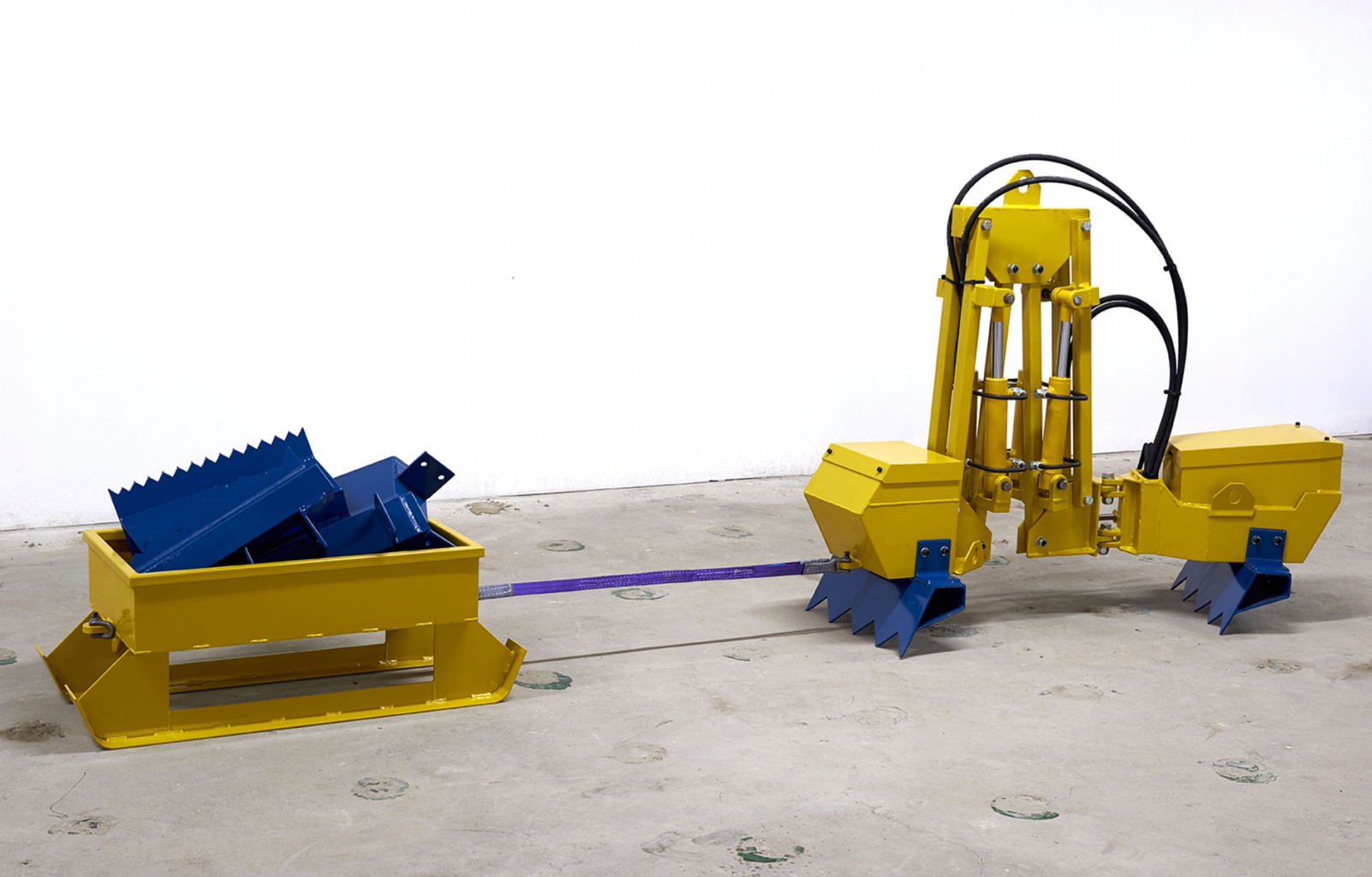James Capper’s sculptures bear the stamp of utility. Sometimes they walk, sometimes they float, and soon they may fly in the air. They can dig, lift, pull, cut, slash, score, or scratch. In his Verb List Compilation: Actions to Relate to Oneself (1967-1968), Richard Serra famously handwrote a list of eighty-four verbs that ranged from rolling to cutting, and employed it as a guide for his future practice.Capper’s sculptures could do all of these things, with the caveat of the hand replaced by a variety of appendages or prostheses – what Capper calls ‘treadpads’ or ‘teeth’ – component parts that allow his works to move and to mark their environment.
Yet it would be a mistake to say that Capper’s sculptures are purely functional. Hydra Shuffle (2013), for instance, which will be exhibited as part of The Moving Museum’s ‘Open Heart Surgery’ show in October 2013, is a mobile sculpture painted yellow. At a distance it is evocative of heavy industry, its colour reminiscent of earth-moving or plant machinery, though it is difficult to know what purpose this machine might serve. A hydraulic system allows Hydra Shuffle to contract and expand in movements akin to those of a caterpillar. Its ‘teeth’ allow it to drag itself across natural terrains such as forest floors but also across harder surfaces like concrete. As with earlier works such as Hydra Scoop (2012) or Nipper (2012), handheld machines used to carve shapes into plaster; Hydra Shuffle’s ‘teeth’ leave marks in the terrain, so that the work can be understood as an attempt to push sculpture beyond the confines of the gallery or museum space. Twentieth-century sculptural practice was driven by the hope that art could have a concrete impact in reality, and many artists believed technology would allow them to achieve this. Hydra Shuffle is as much a response to this tradition as it is concerned with functionality and engineering.
Capper’s sculptures evolve along different modular chains named ‘Divisions’. Each work might be understood as a prototype. Traditional frames of sculptural reference are radically revisited, and if real-time technological advances in heavy industry fall behind or advance ahead of Capper’s own creations, in their unique arrangement ofergonomics, hydraulics and aesthetics, his works exist autonomously.
James Capper (b.1987) graduated in 2010 with an MA in Sculpture from the Royal College of Art, London. He won the Royal Academy’s Jack Goldhill Award for Sculpture in 2009 and in the same year was short-listed for the Jerwood Sculpture Prize. Solo Exhibitions include ‘Divisions’ at the Yorkshire Sculpture Park (2012-13), ‘Ripper Teeth in Action’ at Modern Art Oxford (2011) as well as ‘Fleet’ (2011) and ‘The Long Way Round’ (2010) at Hannah Barry Gallery. His ‘Parts Manual – Earth-Marking and Offshore’, an unabridged catalogue of unique sculpture components was published by the Hato Press in 2013. He lives and works in London.
